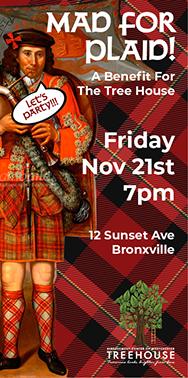From the Mayor: Celebrate Our Differences and Our Commonalities

By Mary C. Marvin, Mayor, Village of Bronxville
Jun. 5, 2019: While I was doing research for my Memorial Day speech on what unites America as a nation, I also uncovered very fascinating facts about what makes us united in our difference from much of the rest of the developed world.
For good or for ill, we are indeed a breed apart, literally starting with the basics of date, time, and temperature.
Along with Belize, Cayman Islands, and Palau, we are the only nations left who register temperature on the Fahrenheit scale. We also promised that we would be on the metric system by 1980 but stayed with pints and quarts with Liberia and Myanmar, the other two holdouts.
Europeans write the date in the format day/month/year, unlike our month/day/year and we often consider a week commencing on Sunday while most of the world starts the new week on Monday. We also use a twelve-hour clock with needed AMs and PMs tacked on, while the rest of the world uses the International Standard 24-hour clock dating back to the Egyptians, which we only reserve for the military.
As to lifestyle differences, not surprisingly, Americans marry more and divorce more, and baby showers and bachelorette parties are considered odd customs around the world. When children arrive, Americans are truly perhaps the only people in the world who have taken the habit of using surnames as given names, and now even as first, not just middle, names.
As to education, schools and universities are free for the most part in Europe, with access to university considered a right. When they arrive at university, students have learned a foreign language – a compulsory requirement since elementary school. Most Europeans have a decent command of two to four languages.
In the job arena, Americans take the least amount of “time off” than any other country. As a result, and also taking into consideration that the EU is over twice as small as the U.S.A., Europeans travel considerably more than Americans inside or outside their own continent. Unlike Americans, they do not do it in their cars. Europeans tend to think that driving 100km is a long way, while, for us that’s an easy journey.
Compared to our European counterparts, we are more religious, and churchgoing is still popular here, while the practice in Europe has almost entirely disappeared, save for the elderly and special events such as Christmas.
Almost all Europeans have cars with manual gears, compared to our preference for automatic ones in cars that are larger and squarer, with an appreciation for limousines and pick-up trucks.
By contrast, Europeans like smaller, rounder cars, quite possibly because small cars are easier to park in tightly packed historical towns where parking garages are anathema. As to bumper stickers on their cars, they are considered an interesting American phenomenon. In Europe, usage is virtually limited to a discreet “baby on board” or a regional flag. In a similar vein, giant billboards on highways in Europe are not only absent but illegal in many countries as considered too distracting. When you get home after parking street side, most of the world leaves their shoes at the door. Clearly on a hygienic and even logical basis, they are way ahead of us. I can’t imagine nor want to think of what we bring home after a day in NYC!
As to politics, Europeans are more liberal regarding soft drugs, prostitution, alcohol, and abortion. In contrast, Americans grant greater freedom when it concerns gun possession and driving a car, vs the European norm, which is 18 for the earliest license. As a result, while the U.S. is home to less than five percent of the world’s population, we have between 40 and 50% of civilian-owned guns.
Patriotism as a concept is very American born. We are unique in playing the national anthem at virtually every sporting event and flying flags on front porches.
In a very curious departure, it is prohibited in most of Europe for military people or anyone with a professional military history to be a politician.
As to our eating habits, we could emulate most of the world, as they eat more varied and balanced meals, less fat, and more yogurt. We consume, as a country, sweeter food and more soft drinks than virtually any other nation. We are also drowning in an abundance of consumption of high fructose corn syrup vs cane sugar, a sweetener more common worldwide.
We eat all of this much earlier than the rest of the world, where on average others eat between 8:00 and 10:30 pm (not sure they are getting up making the 6:40 am express train?!).
In the world of head-scratchers, most of the world does not understand why we eat pizza via hand vs using a knife and fork. (Little did we know when Mayor DiBlasio was ridiculed at Grimaldi’s in Brooklyn, he was actually Continental.)
And in a humorous finale, Europeans just don’t get why our public toilets have inch-wide gaps around the door, and they are extremely uncomfortable watching others walking by while in a stall.
Again, just more reasons to celebrate our differences and our commonalities.
Pictured here: Mayor Mary Marvin
Photo by N. Bower
Editor's note: As a public service, MyhometownBronxville publishes articles from local institutions, officeholders, and individuals. MyhometownBronxville does not fact-check statements therein, and any opinions expressed therein do not necessarily reflect the thinking of its staff.
Government & History Directory
Bronxville is a quaint village (one square mile) located just 16 miles north of midtown Manhattan (roughly 30 minutes on the train) and has a population of approximately 6,500. It is known as a premier community with an excellent public school (K-12) and easy access to Manhattan. Bronxville offers many amenities including an attractive business district, a hospital (Lawrence Hospital), public paddle and tennis courts, fine dining at local restaurants, two private country clubs and a community library.
While the earliest settlers of Bronxville date back to the first half of the 18th century, the history of the modern suburb of Bronxville began in 1890 when William Van Duzer Lawrence purchased a farm and commissioned the architect, William A. Bates, to design a planned community of houses for well-known artists and professionals that became a thriving art colony. This community, now called Lawrence Park, is listed on the National register of Historic Places and many of the homes still have artists’ studios. A neighborhood association within Lawrence Park called “The Hilltop Association” keeps this heritage alive with art shows and other events for neighbors.
Bronxville offers many charming neighborhoods as well as a variety of living options for residents including single family homes, town houses, cooperatives and condominiums. One of the chief benefits of living in “the village” is that your children can attend the Bronxville School.
The Bronxville postal zone (10708, known as “Bronxville PO”) includes the village of Bronxville as well as the Chester Heights section of Eastchester, parts of Tuckahoe and the Lawrence Park West, Cedar Knolls, Armour Villa and Longvale sections of Yonkers. Many of these areas have their own distinct character. For instance, the Armour Villa section has many historic homes and even has its own newsletter called “The Villa Voice” which reports on neighborhood news.
Link to Village of Bronxville One Square Mile Monthly Newsletter
Village of Bronxville Administrative Offices
337-6500
Open 9:00am - 4pm excluding holidays and weekends
Bronxville Police Department
337-0500
Open 24 hours
Bronxville Parking Violations
337-2024
Open 9:00am - 4pm excluding holidays and weekends
Bronxville Fire Deparment
793-6400

















